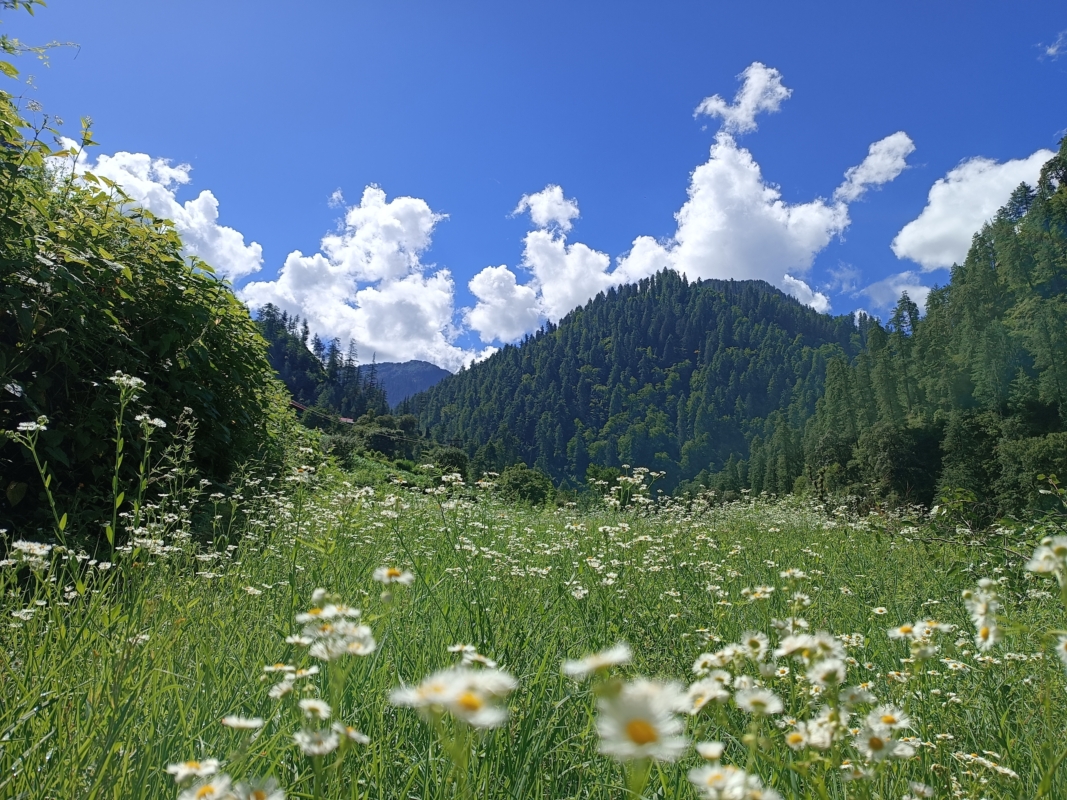KiThe Great Himalayan National Park, a UNESCO World Heritage Site in Himachal Pradesh, India, is a mesmerizing sanctuary of pristine wilderness. Spanning 90,540 hectares, this park’s dramatic topography ranges from high alpine peaks exceeding 6,000 meters above sea level to lush riverine forests at lower altitudes.
The Great Himalayan National Park (GHNP) is a biodiversity hotspot, home to 25 distinct forest types that reflect the rich ecological diversity of the Western Himalayas. These forest types include a variety of broadleaf and coniferous forests, ranging from subtropical pine forests at lower altitudes to temperate oak and conifer forests as one ascends, and finally transitioning to subalpine and alpine meadows at the highest elevations. The diversity of these forest types is shaped by the park’s wide altitudinal range, varying microclimates, and complex topography. This mosaic of habitats supports a wide array of plant and animal species, many of which are endemic to the region. The intricate blend of these forest types creates a stunning and varied landscape, offering a unique experience for visitors and providing essential ecological functions that sustain the park’s biodiversity.

Biodiversity and Ecosystems: Tourism Perspective in GHNP
The Great Himalayan National Park (GHNP) is not just a haven for biodiversity; it is also a fascinating destination for eco-tourists and nature enthusiasts. The unique combination of diverse ecosystems, rare species, and stunning landscapes makes GHNP a premier location for those interested in experiencing the rich natural heritage of the Western Himalayas.
Biogeographic Realms
- Unique Ecotourism Experience: Being located at the intersection of the Palearctic and Indomalayan realms, GHNP offers a rare opportunity for tourists to explore ecosystems that blend elements from two of the world’s major biogeographic regions. This convergence creates a biodiversity hotspot that is unmatched, attracting botanists, zoologists, and curious travelers alike.
- Spectacular Peaks and Verdant Valleys: The park is framed by towering peaks that rise above 6,000 meters, offering a dramatic contrast to the lush, verdant valleys below. From the high alpine meadows to the serene riverine forests, every corner of GHNP presents an awe-inspiring landscape.
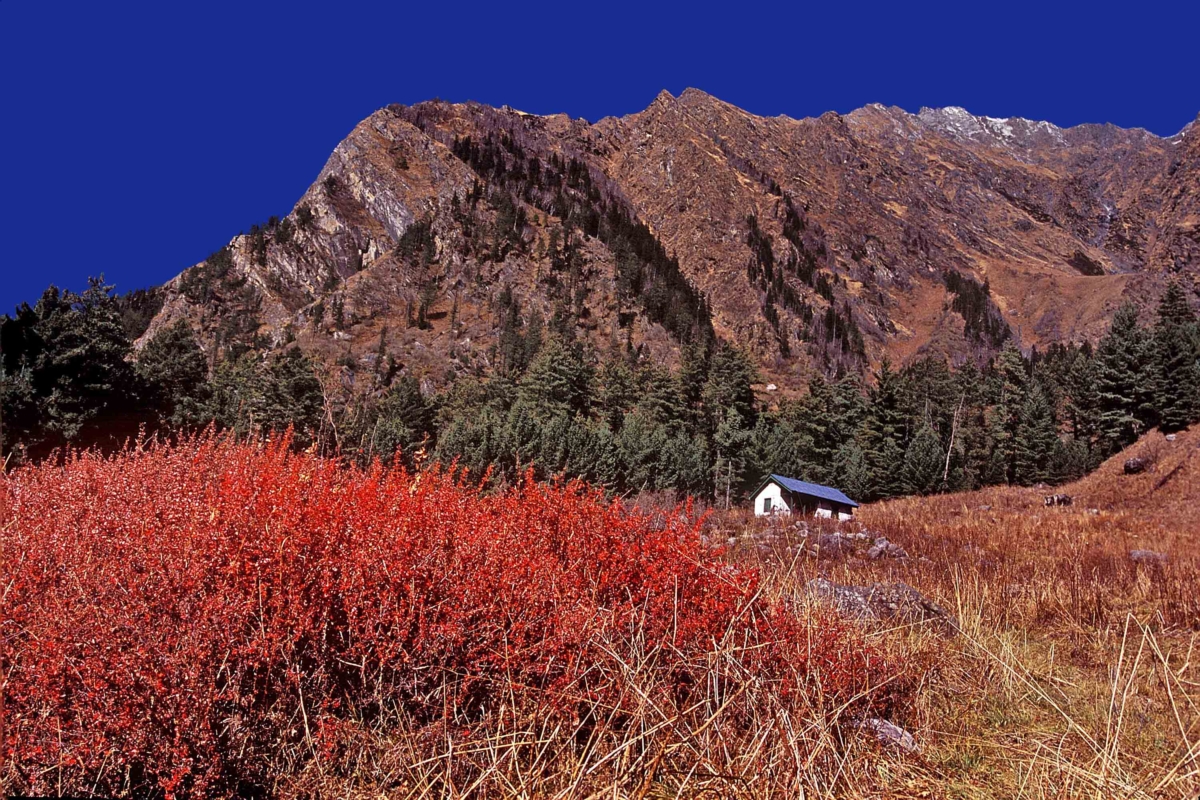
Forest Types
- Diverse Landscapes for Trekking: The 25 distinct forest types within GHNP provide varied and breathtaking landscapes for trekking and nature walks. Visitors can trek through lush broadleaf forests, dense coniferous woods, and open alpine meadows, each offering its own unique scenery and ecological treasures. For photographers and nature lovers, the constantly changing environments offer endless opportunities to capture the beauty of the Himalayas.
Endemism
- Spotting Endemic Species: GHNP is a prime location for those interested in observing endemic species, many of which are not found anywhere else in the world. Birdwatchers, in particular, will be thrilled by the chance to see species that are exclusive to the Western Himalayas, while botanists can discover rare and endemic plants along the trails. This makes the park a valuable destination for scientific tourism and educational tours.
Flora
- Botanical Tours and Herbal Trails: With 805 vascular plant species, including 192 lichens, 12 liverworts, and 25 moss species, GHNP is a living laboratory for plant enthusiasts. Approximately 58% of its angiosperms are endemic to the Western Himalayas, making it an ideal destination for those interested in herbal medicine and ethnobotany. Guided botanical tours can be arranged to explore the rich plant life, including the medicinal herbs that local communities have used for centuries.
- Canopy Forests: Approximately one-third of GHNP features closed-canopy forests, ranging from valley bottoms up to 3,300m-3,600m. The park’s upper areas above 4,000m showcase subalpine and alpine scrub vegetation.
- Diversity of Vegetation: The GHNP’s vegetation is highly diverse due to the varied altitude, climate, and topography. It ranges from subtropical forests at lower altitudes to alpine meadows at higher elevations.
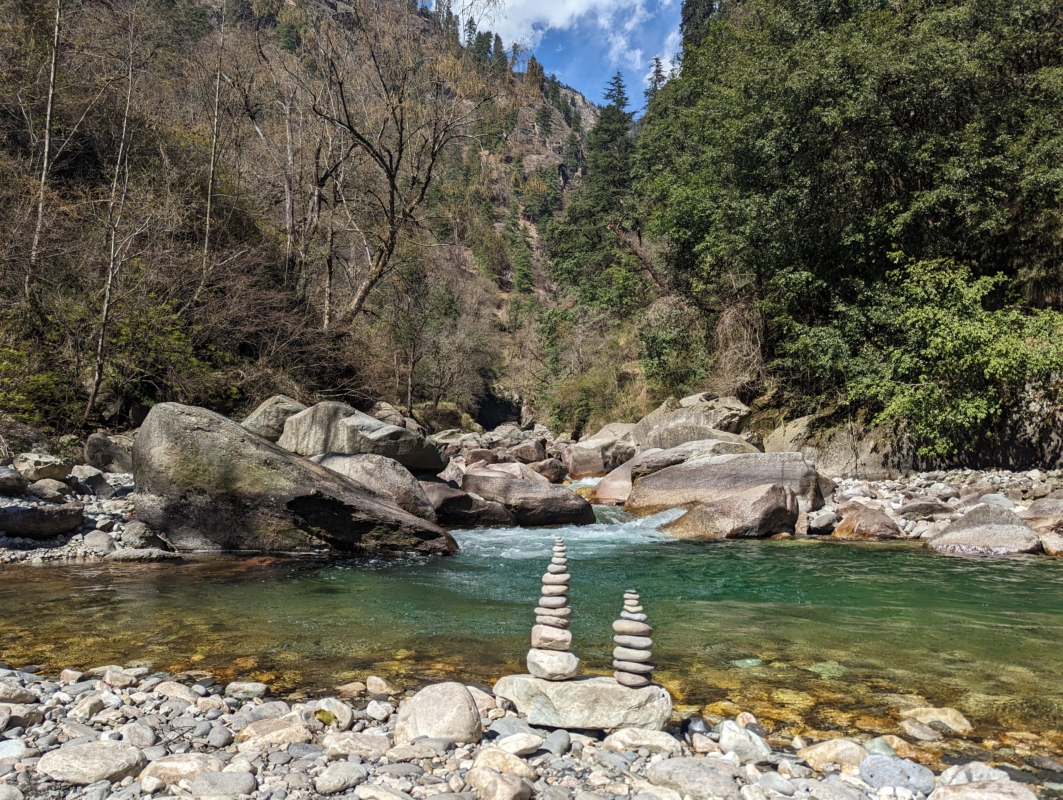
- Subtropical to Alpine Zones: At lower altitudes, you find broadleaf forests, while mid-altitude zones are dominated by conifers, and higher elevations feature alpine grasslands and meadows.
- Subtropical Forests: These include species like oak (Quercus spp.), chestnut (Castanea spp.), and maple (Acer spp.).
- Temperate Coniferous Forests: Species such as deodar (Cedrus deodara), blue pine (Pinus wallichiana), and Himalayan fir (Abies pindrow) dominate these forests.
- Alpine Meadows and Scrub: These areas support species like juniper, primulas (Primula spp.), Leontopodium, Corydalis, Pleurospermum, Saussurea, Senecio, potentillas (Potentilla spp.), and several species of rhododendrons.
- Medicinal Plants: GHNP harbors 34 of the 47 threatened medicinal plants in Himachal Pradesh, crucial for both traditional and modern medicine. Some of the notable species include: Picrorhiza kurroa (Kutki), used for liver and respiratory disorders. Nardostachys jatamansi (Spikenard), known for its aromatic and medicinal properties. Aconitum heterophyllum (Atish), a highly valued medicinal plant used in traditional medicine.
- Shrubs and Herbs: Includes diverse genera such as Berberis, Daphne, Desmodium, Lonicera, Indigofera, and Viburnum. Hill bamboo and climbers enhance the diversity
- Lichens: 192 species, representing 31 families and 65 genera. Tirthan Valley alone hosts 101 species, with significant diversity found at 2,500m to 3,000m.
- Bryophytes: 12 liverwort species and 23 moss species, contributing to the park’s unique ecosystem.
Fauna
- Wildlife and Birdwatching: GHNP’s diverse fauna includes 31 species of mammals, 209 species of birds, 9 amphibians, 12 reptiles, and 125 insects, offering ample opportunities for wildlife enthusiasts. The park is a birdwatcher’s paradise, with the chance to spot rare species such as the Western Tragopan and Cheer Pheasant. For those interested in larger mammals, guided wildlife safaris can provide glimpses of elusive species like the Snow Leopard, Himalayan Tahr, and Himalayan Brown Bear.
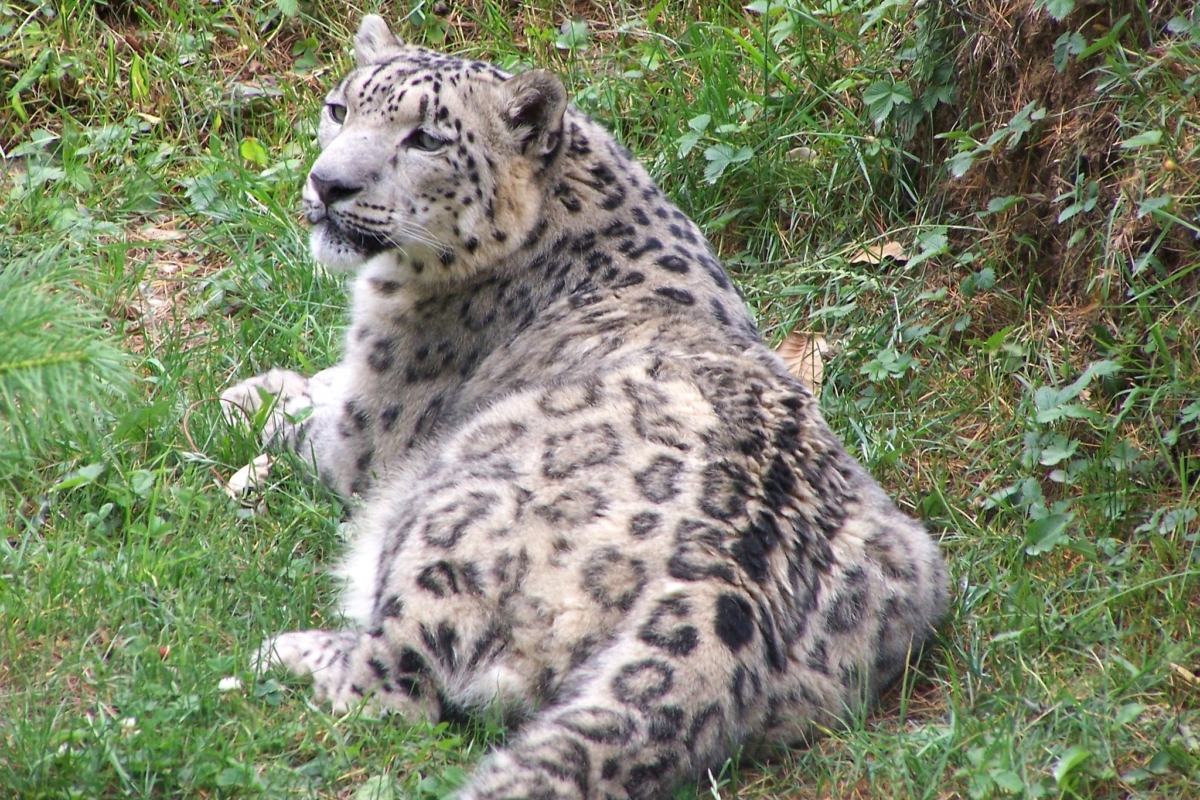
- Mammals:
- Snow Leopard (Panthera uncia): GHNP is one of the few places in India where the elusive snow leopard is found. It is a top predator in the park and an indicator species for the health of the ecosystem.
- Himalayan Brown Bear (Ursus arctos isabellinus): Another large mammal species found in GHNP, primarily inhabiting the higher altitudes.
- Himalayan Tahr (Hemitragus jemlahicus): A wild goat species that inhabits the steep, rugged terrain of the park.
- Himalayan Musk Deer (Moschus leucogaster): A globally threatened species valued for its musk, which is used in traditional medicines.
- Birds:
- Western Tragopan (Tragopan melanocephalus): One of the most notable bird species in GHNP, this pheasant is globally threatened and endemic to the Western Himalayas.
- Himalayan Monal (Lophophorus impejanus): The national bird of Nepal, known for its colorful plumage and also found in GHNP.
- Cheer Pheasant (Catreus wallichii): Another threatened bird species, inhabiting the dense undergrowth of the park’s forests.
- Invertebrates:
- Butterflies: GHNP is home to a rich diversity of butterflies, including species like the Apollo (Parnassius spp.), Common Yellow Swallowtail (Papilio machaon), and several others that contribute to the park’s ecological balance.
- Insects: The park harbors a diverse array of insect species, some of which play crucial roles in pollination and maintaining the health of the ecosystem.
Threatened Species
- Conservation Tourism: GHNP is a sanctuary for several globally threatened species, making it a significant destination for conservation-minded tourists. Visitors can learn about ongoing conservation efforts and the importance of protecting endangered species like the Musk Deer and the Western Tragopan. Participating in eco-friendly tourism activities helps support the park’s conservation initiatives, contributing to the protection of these rare species and their habitats.
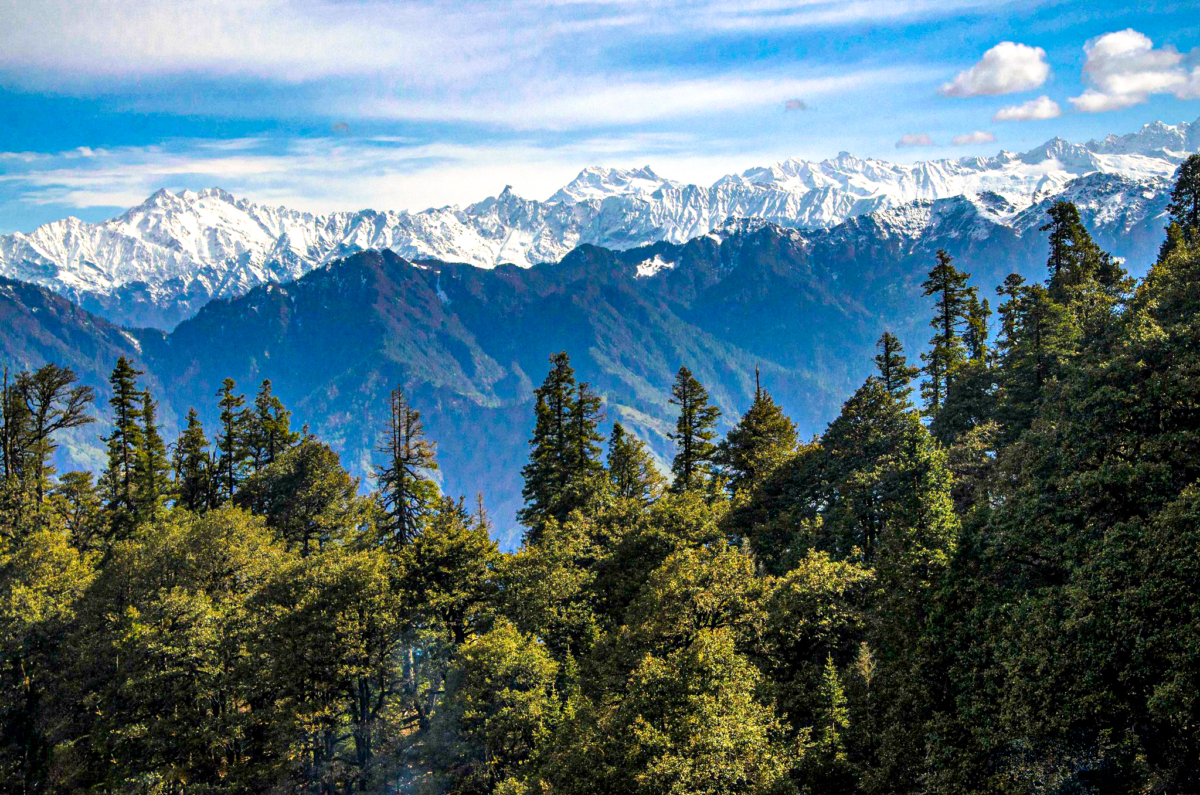
Tourism Activities in GHNP:
- Trekking and Hiking: Multiple trekking routes, ranging from moderate to challenging, take visitors through different forest types and altitudes, offering stunning views of the snow-capped peaks and lush valleys.
- Birdwatching: Dedicated birdwatching tours can be organized to explore the diverse avian population, especially in areas like Tirthan and Sainj Valleys.
- Camping: Eco-campsites in and around the park provide an immersive experience, allowing visitors to connect with nature in a serene environment.
- Photography Tours: The diverse ecosystems, wildlife, and landscapes make GHNP a perfect destination for nature photographers.
- Cultural Interaction: Visitors can engage with local communities to learn about traditional practices, including the use of medicinal plants and sustainable living in harmony with nature.
- Wildlife Conservation Workshops: Educational programs and workshops on wildlife conservation and the importance of biodiversity can be organized for interested tourists and students.
Tourism Impact and Management:
- Sustainable Tourism Practices: GHNP management encourages sustainable tourism practices to minimize the impact on the park’s delicate ecosystems. This includes regulated trekking routes, limited visitor numbers, and eco-friendly camping policies.
- Buffer Zone: A 26,560-hectare Ecozone buffer extends along the southwestern edge of the Great Himalayan National Park, strategically managed to alleviate human pressures and protect the park’s core values.
- Protected Area Complex: The GHNP forms a crucial component of a larger ecological network, integrating seamlessly with surrounding national parks and wildlife sanctuaries. This extensive protected area complex ensures a continuum of natural habitats and enhances conservation efforts across the region.
- Community Involvement: The park’s management works closely with local communities to ensure that tourism benefits both conservation efforts and local livelihoods. Tourists can participate in community-based tourism initiatives, such as homestays and guided tours by local villagers, which help support the local economy.
Places to Visit in Great Himalayan National Park
The Great Himalayan National Park (GHNP), located in Himachal Pradesh, India, encompasses four major valleys, each offering distinct landscapes, biodiversity, and trekking opportunities. These valleys are the Tirthan Valley, Sainj Valley, Jiwa Nal Valley, and Parvati Valley. Here’s a closer look at each:
1. Tirthan Valley
- Location: Tirthan Valley is one of the most popular valleys in GHNP, named after the Tirthan River that flows through it.
- Landscape: The valley is characterized by lush green forests, apple orchards, terraced fields, and scenic meadows. It’s surrounded by towering peaks and dotted with small villages.
- Biodiversity: Tirthan Valley is rich in flora and fauna, with dense forests of pine, cedar, and deodar. It’s a haven for bird watchers and nature enthusiasts, offering sightings of various species, including the endangered Western Tragopan.
- Activities: The valley is a gateway to several trekking routes, ranging from easy to moderate difficulty. Treks lead to the higher reaches of GHNP, offering breathtaking views of the mountains and the chance to explore remote wilderness areas.
2. Sainj Valley
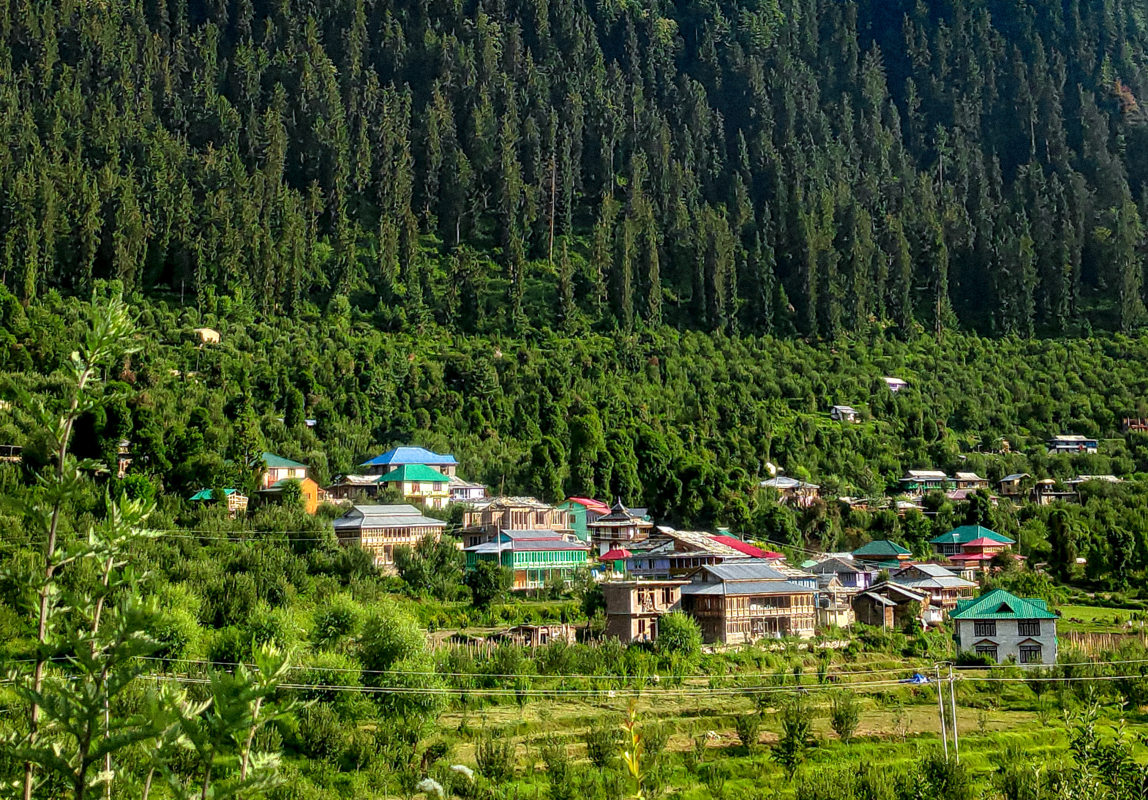
- Location: Sainj Valley is another beautiful valley in GHNP, located near the Sainj River.
- Landscape: The valley has a distinctive V-shape, with a landscape that includes riverine forests, meadows, and picturesque villages. The architecture in this region is notable for its tall, wooden temples built in traditional Himachali style.
- Cultural Significance: The valley is home to Shangarh Village, known for its ancient temples and large, open meadows. These temples are not only religious sites but also played a historical role in defending the region.
- Activities: Sainj Valley is ideal for those seeking a quieter and more culturally immersive experience. It offers shorter treks and walks through beautiful meadows and traditional villages, making it a perfect spot for nature lovers and those interested in local culture.
3. Jiwa Nal Valley
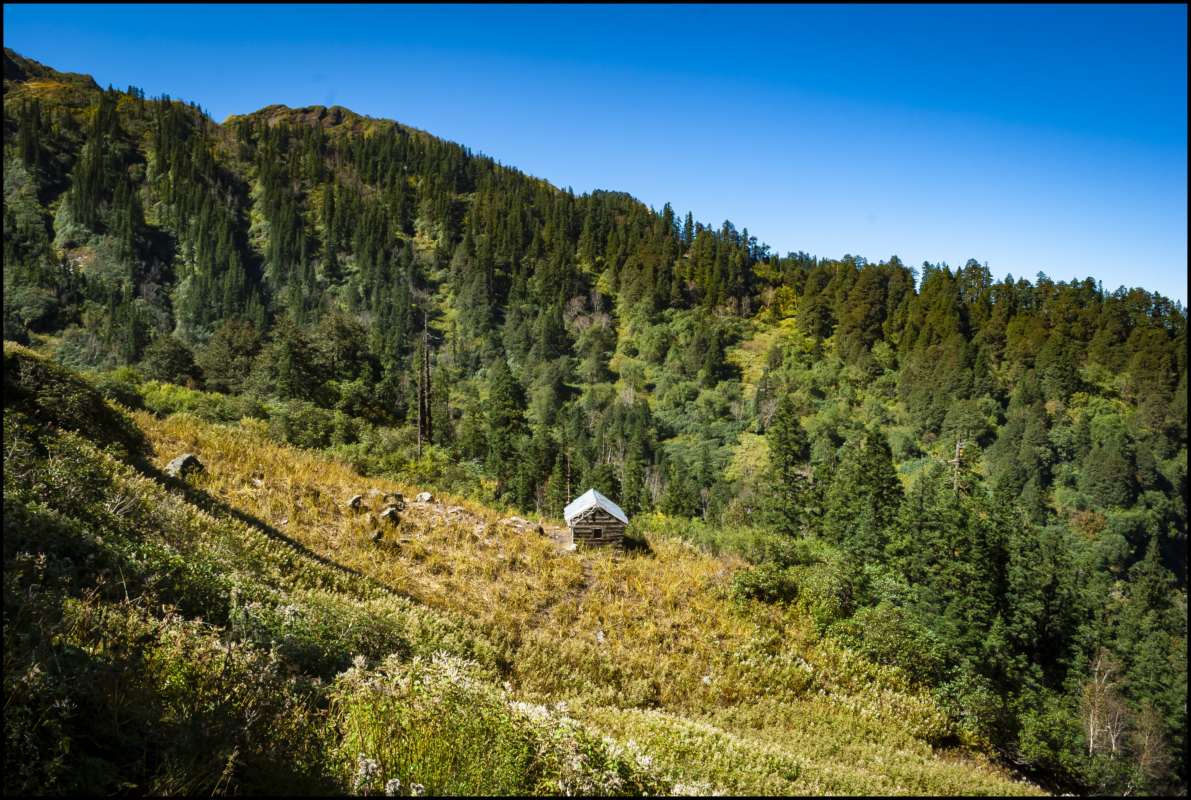
- Location: Jiwa Nal Valley is the most remote and least accessible of the valleys in GHNP, making it a destination for serious trekkers and adventure seekers.
- Landscape: The valley is rugged, with steep cliffs, deep gorges, and dense forests. The Jiwa Nal River flows through the valley, originating from the high-altitude Sartoo Pond and eventually joining the Beas River.
- Solitude: Due to its remoteness, Jiwa Nal Valley offers solitude and pristine natural beauty. It’s a place where trekkers can truly connect with nature, away from the more frequented trails.
- Activities: Trekking in Jiwa Nal Valley is challenging and requires good physical fitness and experience. The trails are steep and often difficult, but the rewards include stunning views, untouched wilderness, and a chance to encounter rare wildlife.
4. Parvati Valley
- Location: Parvati Valley is a famous tourist destination in the region, known for its ethereal beauty and vibrant culture.
- Landscape: The valley is characterized by its dramatic scenery, with the Parvati River cutting through deep gorges and lush forests. The valley is dotted with villages that are popular among backpackers and travelers, such as Kasol, Tosh, and Malana.
- Cultural Significance: Parvati Valley is known for its unique culture, particularly in villages like Malana, which has its own language and customs. The valley is also famous for its hot springs, especially in Kheerganga.
- Activities: Parvati Valley is popular for trekking, camping, and exploring the unique cultural heritage of the region. It also attracts those looking to relax in its scenic beauty and peaceful environment.

